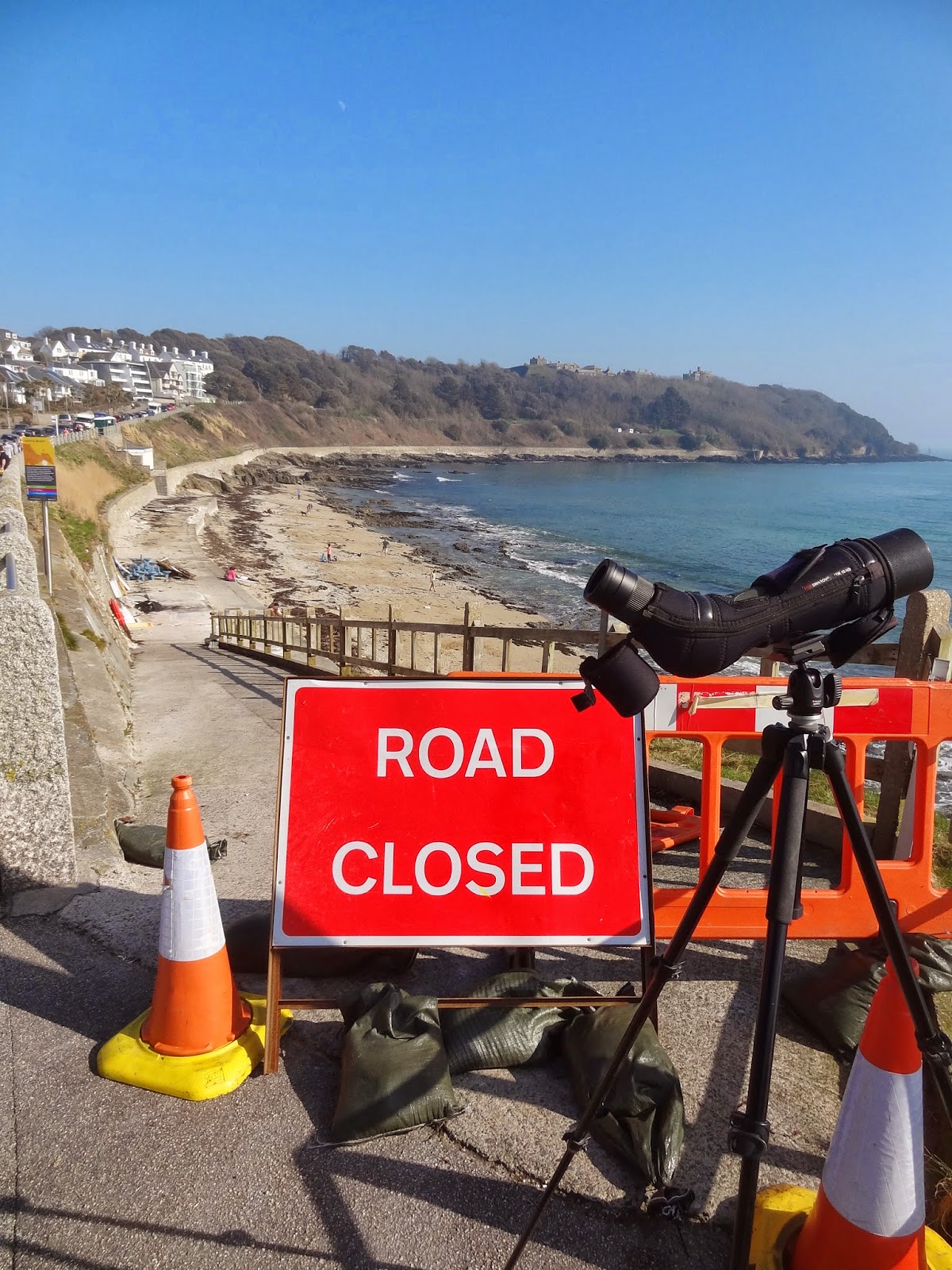More patching has ensued with the exception of one visit to Devoran for some data collection that Matt and I are doing regarding the avian biodiversity between Devoran and Penryn Estuary.
Devoran
Our visit to Devoran on the 12th produced the expected waders, including
3 Black-tailed Godwits,
12 Bar-tailed Godwits,
4 Red-breasted Mergansers,
3 Mediterranean Gulls and
2 Common Gulls. A couple butterflies were also on the wing notably
1 Peacock,
1 Small Tortoiseshell and my first
2 Small Whites of the year.
Penryn River
Our highlights to Penryn River on the 14th included
1 Whimbrel,
Ravens,
1 Common Sandpiper and a
Mediterranean Gull.
From the 15th onwards, Swanpool, Gylly and seawatching/scanning the bay were back on the menu. The 15th involved just this and along with the regular
Red-necked Grebe still bobbing about in the Falmouth Bay I also connected with
1 Great Northern Diver off Pennance Point and the largest single masted yacht on the World (Mirabella V)! The recent storms have also shown their teeth as the concrete foundations on which a cafe used to sit are now well and truly succumbing to the processes of marine erosion.
Mirabella V
damage to the concrete platform at Castle Beach
I also managed to squeeze in a couple hours mothing at College and Argal Res's as part of an Eco Soc event. See my post of sightings on my mothing blog:
samuelmothing.blogspot.co.uk
turquoise sea looking over Falmouth Bay from Castle Beach
The usual sightings continued into the 21st as well with a light onshore breeze pushing a Black-throated Diver into the Bay along with a couple Guillemots and 1 Razorbill. A distant auk. sp. did make me raise an eyebrow but it disappeared too quickly for me to confirm so I decided to set it out of mind instead of report it as a pos. Black Guille as I was suspecting. 3 Sandwich Terns hunting in the bay were a nice delight and I connected yet again with the long-staying Red-necked Grebe and Slavonian Grebe (the later beginning to progress into summer plumage). 9 Fulmars were still in the immediate area with 7 using the nesting ledges already (I'm looking forward to seeing their success later in the year).
I spent most of my time grilling the Rock Pipits for potential littoralis at Castle Beach where I found one very probable individual before calling it a day and heading back. However, I found myself yet again scanning the bay on my return, which is when I chanced upon the aforementioned guille again and to my utter surprise it was indeed a BLACK GUILLEMOT!!! Yet another self-found patch mega the second on patch this year and this time a 1st winter individual. The sea was a little choppy but I was glad to get a record shot. I'm particularly pleased as the regular patch goodies haven't dried up yet as I'd worried.
1st winter Black Guillemot
The 23rd saw a reversal back to normality again with 1 Great Northern Diver in the bay, a flock of 9 distant diver sp. (most probably GNDs), a distant grebe sp. (probably the RNG) and a Grey Seal. I was mostly focused on connecting with the potential littoralis I'd found at Castle Beach a couple days ago and sure enough it was still clambering over the seaweed and rocks feeding amongst the half dozen petrosus. I also saw my first patch terrapin sp. at Swanpool sunning itself on the western bank hidden behind some reeds.
terrapin sp.
littoralis Rock Pipit?
I thought the margins to the outer rectrices were supposed to be white on littoralis. Seems I'm back to step one with trying to differentiate the two at such a difficult time in the year.













.JPG)
.JPG)
.JPG)









.JPG)

.JPG)


.jpg)


1.jpg)
.JPG)
2.jpg)
.JPG)
.JPG)
.JPG)